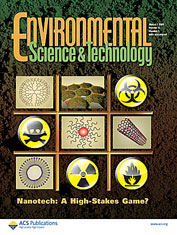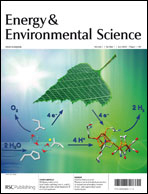The Journal of the IEST is a peer-reviewed scientific journal and the official publication of the Institute of Environmental Sciences and Technology (IEST). It covers research on simulation, testing, modeling, control, and the teaching of the environmental sciences and technologies. The journal was established in 1958 as the Journal of Environmental Engineering. In October 1959, it was renamed Journal of Environmental Sciences and obtained its current title in 1998.
ULPA is an acronym for "Ultra-low Penetration Air (filter)". A ULPA filter can remove from the air at least 99.999% of dust, pollen, mold, bacteria and any airborne particles with a minimum particle penetration size of 120 nanometres. A ULPA filter can remove – oil smoke, tobacco smoke, rosin smoke, smog, insecticide dust.

MIL-STD-810, U S Department of Defense Test Method Standard, Environmental Engineering Considerations and Laboratory Tests, is a United States Military Standard that emphasizes tailoring an equipment's environmental design and test limits to the conditions that it will experience throughout its service life, and establishing chamber test methods that replicate the effects of environments on the equipment rather than imitating the environments themselves. Although prepared specifically for U.S. military applications, the standard is often applied for commercial products as well.
CSIRO Publishing is an Australian-based science and technology publisher. It publishes books, journals and magazines across a range of scientific disciplines, including agriculture, chemistry, plant and animal sciences, natural history and environmental management. It also produces interactive learning modules for primary school students and provides writing workshops for researchers.
Environmental Science: Processes & Impacts is a monthly peer-reviewed scientific journal covering all aspects of environmental science. It is published by the Royal Society of Chemistry and Kris McNeill is the editor-in-chief. The journal was established in 1999 as the Journal of Environmental Monitoring and obtained its current title in 2013.

Environmental Science & Technology is a biweekly peer-reviewed scientific journal published since 1967 by the American Chemical Society. It covers research in environmental science and environmental technology, including environmental policy. Environmental Science & Technology has a sister journal, Environmental Science & Technology Letters, which publishes short communications.
The Institute of Environmental Sciences and Technology (IEST) is a non-profit, technical society where professionals who impact controlled environments connect, gain knowledge, receive advice, and work together to create industry best practices. The organization uniquely serves environmental test engineers, qualification engineers, cleanroom professionals, those who work in product testing and evaluation, and others who work across a variety of industries, including: acoustics, aerospace, automotive, biotechnology/bioscience, climatics, cleanroom operations/design/equipment/certification, dynamics, filtration, food processing, HVAC design, medical devices, nanotechnology, pharmaceutical, semiconductors/microelectronics, and shock/vibration. Information on ISO 14644 and ISO 14698 standards can be found through this organization.
FED-STD-209 EAirborne Particulate Cleanliness Classes in Cleanrooms and Cleanzones was a federal standard concerning classification of air cleanliness, intended for use in environments like cleanrooms. The standard based its classifications on the measurement of airborne particles.
ISO 14644 Standards were first formed from the US Federal Standard 209E Airborne Particulate Cleanliness Classes in Cleanrooms and Clean Zones. The need for a single standard for cleanroom classification and testing was long felt. After ANSI and IEST petitioned to ISO for new standards, the first document of ISO 14644 was published in 1999, ISO 14644-1.
The ISO 14698 Standards features two International Standards on biocontamination control for cleanrooms. IEST, the Secretariat and Administrator of ISO Technical Committee 209, helped develop this series of ISO 14698 Standards.
For United States Military Standards, IEST-STD-CC1246 is the latest revision of MIL-STD-1246. This all came about in 1997, the Army Missile Command commissioned the Institute of Environmental Sciences and Technology (IEST) to revise and adopt MIL-STD-1246 as an industry standard as its usefulness had expanded far beyond military applications, and U.S. policy was requiring agencies to convert government standards to nongovernmental standards where practical.

Current Biology is a biweekly peer-reviewed scientific journal that covers all areas of biology, especially molecular biology, cell biology, genetics, neurobiology, ecology, and evolutionary biology. The journal includes research articles, various types of review articles, as well as an editorial magazine section. The journal was established in 1991 by the Current Science group, acquired by Elsevier in 1998 and has since 2001 been part of Cell Press, a subdivision of Elsevier. According to Journal Citation Reports, the journal has a 2020 impact factor of 10.834. It was categorized as a "high impact journal" by the Superfund Research Program.

Energy & Environmental Science is a monthly peer-reviewed scientific journal publishing original (primary) research and review articles. The journal covers work of an interdisciplinary nature in the biochemical and biophysical sciences and chemical and mechanical engineering disciplines. It covers energy area. Energy & Environmental Science is published by the Royal Society of Chemistry.
Allied Academies is a reportedly fraudulent corporation chartered under the laws of North Carolina. Its postal address is in London, United Kingdom. It presents itself as an association of scholars, with supporting and encouraging research and the sharing and exchange of knowledge as its stated aims. The organization consists of 30 affiliate academies, which provide awards to academics and publish academic journals both online and in hard copy for members. Since 2015 the organization has been listed on Jeffrey Beall's list of "potential, possible, or probable predatory scholarly open-access publishers". It is in a partnership with OMICS Publishing Group which uses its website and logo. In 2018, OMICS owner Srinubabu Gedela declared that he had informed the Nevada court that Allied Academies was a subsidiary of OMICS International. During a conference in 2018, they falsely listed a prominent chemist among its organizing committee who had not agreed to this and was not affiliated with Allied Academies.
IOP Publishing is the publishing company of the Institute of Physics. It provides publications through which scientific research is distributed worldwide, including journals, community websites, magazines, conference proceedings and books. The Institute of Physics is a scientific charity devoted to increasing the practice, understanding and application of physics. Any financial surplus earned by IOP Publishing goes to support physics through the activities of the Institute.

An environmental chamber, also called a climatic chamber or climate chamber, is an enclosure used to test the effects of specified environmental conditions on biological items, industrial products, materials, and electronic devices and components.

Ahmed A. Busnaina is an American nanotechnologist who is the William Lincoln Smith Chair and University Distinguished Professor, and Director of National Science Foundation’s Nanoscale Science and Engineering Center (NSEC) for High-rate Nanomanufacturing and the NSF Center for Nano and Microcontamination Control at Northeastern University in Boston, Massacusetts.
The Algerian Institute of Standardization (AIOS-IANOR), was erected in a public industrial and commercial fields (EPIC) by Executive Decree No. 98-69 of February 21, 1998, as part of restructuring INAPI.
Environmental Science & Technology Letters is an online-only peer-reviewed scientific journal publishing brief research reports in the fields of environmental science and technology. It was first opened to submissions in 2013, with its first articles published online in January 2014. It was established by the American Chemical Society to serve as a sister journal to their existing journal, Environmental Science & Technology, with an expedited time to publication. To this end, the journal publishes all articles as soon as publishable after acceptance, though they are also summarized in monthly issues. The editor-in-chief is Prof. Bryan Brooks. According to the Journal Citation Reports, the journal has a 2019 impact factor of 7.678.